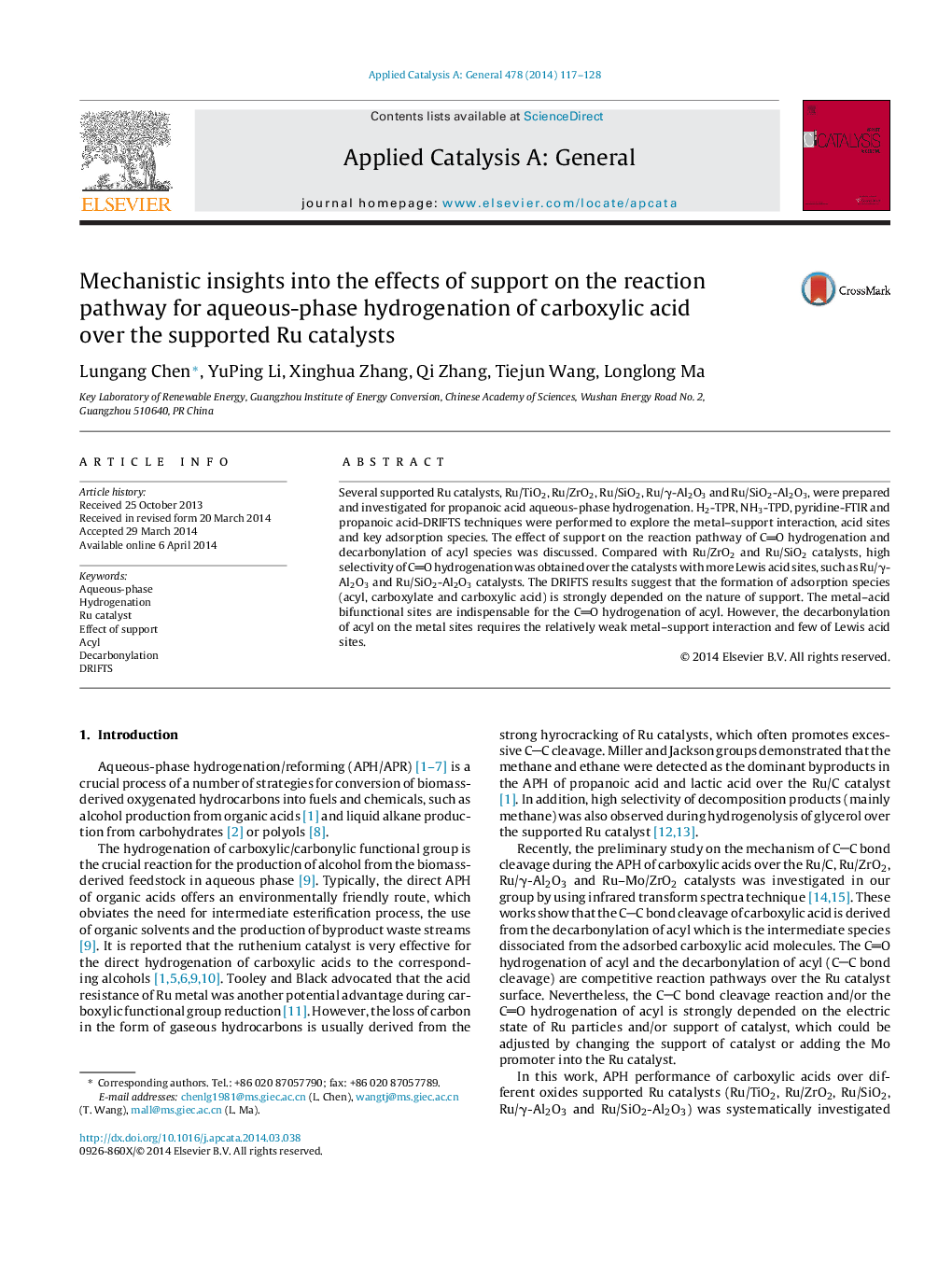| کد مقاله | کد نشریه | سال انتشار | مقاله انگلیسی | نسخه تمام متن |
|---|---|---|---|---|
| 39680 | 45831 | 2014 | 12 صفحه PDF | دانلود رایگان |

• The effect of support on CO hydrogenation and decarbonylation of acyl was studied.
• The formation of adsorption species from carboxylic acid depended on the nature of support.
• The presence of enough acid sites and SMSI improved the hydrogenation of acyl species.
• Decarbonylation of acyl is favored on the bare Ru sites.
Several supported Ru catalysts, Ru/TiO2, Ru/ZrO2, Ru/SiO2, Ru/γ-Al2O3 and Ru/SiO2-Al2O3, were prepared and investigated for propanoic acid aqueous-phase hydrogenation. H2-TPR, NH3-TPD, pyridine-FTIR and propanoic acid-DRIFTS techniques were performed to explore the metal–support interaction, acid sites and key adsorption species. The effect of support on the reaction pathway of CO hydrogenation and decarbonylation of acyl species was discussed. Compared with Ru/ZrO2 and Ru/SiO2 catalysts, high selectivity of CO hydrogenation was obtained over the catalysts with more Lewis acid sites, such as Ru/γ-Al2O3 and Ru/SiO2-Al2O3 catalysts. The DRIFTS results suggest that the formation of adsorption species (acyl, carboxylate and carboxylic acid) is strongly depended on the nature of support. The metal–acid bifunctional sites are indispensable for the CO hydrogenation of acyl. However, the decarbonylation of acyl on the metal sites requires the relatively weak metal–support interaction and few of Lewis acid sites.
The presence of enough acid sites and SMSI are indispensable for the formation of metal–acid bifunctional sites, which improve the CO hydrogenation of acyl species—the intermediate species dissociated from the adsorbed carboxylic acid molecules. However, the decarbonylation of acyl species are favored on the bare Ru sites, which requiring the available metal sites with weaker metal–support interaction and few of acid sites.Figure optionsDownload high-quality image (133 K)Download as PowerPoint slide
Journal: Applied Catalysis A: General - Volume 478, 20 May 2014, Pages 117–128